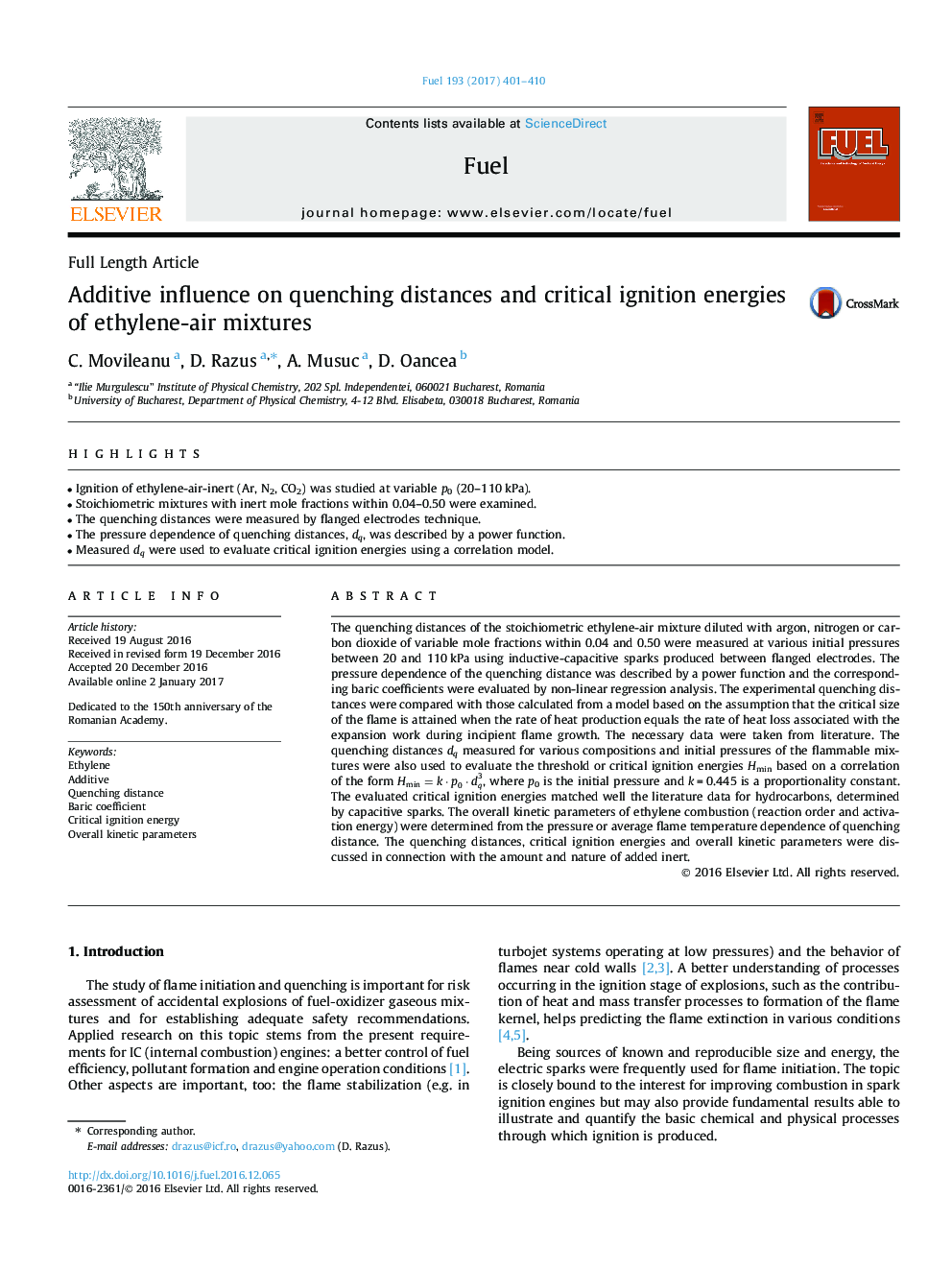| Article ID | Journal | Published Year | Pages | File Type |
|---|---|---|---|---|
| 6474974 | Fuel | 2017 | 10 Pages |
â¢Ignition of ethylene-air-inert (Ar, N2, CO2) was studied at variable p0 (20-110 kPa).â¢Stoichiometric mixtures with inert mole fractions within 0.04-0.50 were examined.â¢The quenching distances were measured by flanged electrodes technique.â¢The pressure dependence of quenching distances, dq, was described by a power function.â¢Measured dq were used to evaluate critical ignition energies using a correlation model.
The quenching distances of the stoichiometric ethylene-air mixture diluted with argon, nitrogen or carbon dioxide of variable mole fractions within 0.04 and 0.50 were measured at various initial pressures between 20 and 110 kPa using inductive-capacitive sparks produced between flanged electrodes. The pressure dependence of the quenching distance was described by a power function and the corresponding baric coefficients were evaluated by non-linear regression analysis. The experimental quenching distances were compared with those calculated from a model based on the assumption that the critical size of the flame is attained when the rate of heat production equals the rate of heat loss associated with the expansion work during incipient flame growth. The necessary data were taken from literature. The quenching distances dq measured for various compositions and initial pressures of the flammable mixtures were also used to evaluate the threshold or critical ignition energies Hmin based on a correlation of the form Hmin=k·p0·dq3, where p0 is the initial pressure and k = 0.445 is a proportionality constant. The evaluated critical ignition energies matched well the literature data for hydrocarbons, determined by capacitive sparks. The overall kinetic parameters of ethylene combustion (reaction order and activation energy) were determined from the pressure or average flame temperature dependence of quenching distance. The quenching distances, critical ignition energies and overall kinetic parameters were discussed in connection with the amount and nature of added inert.
